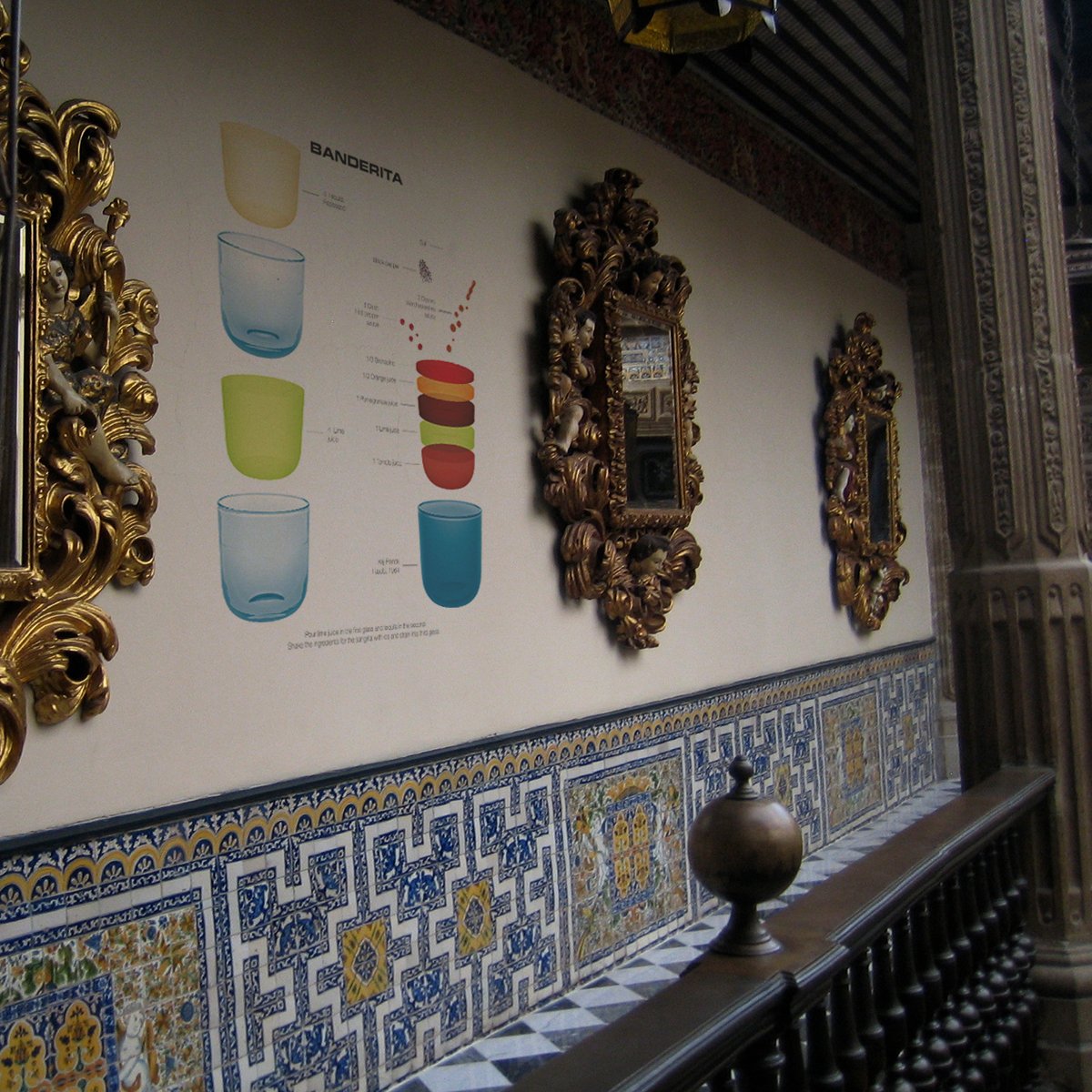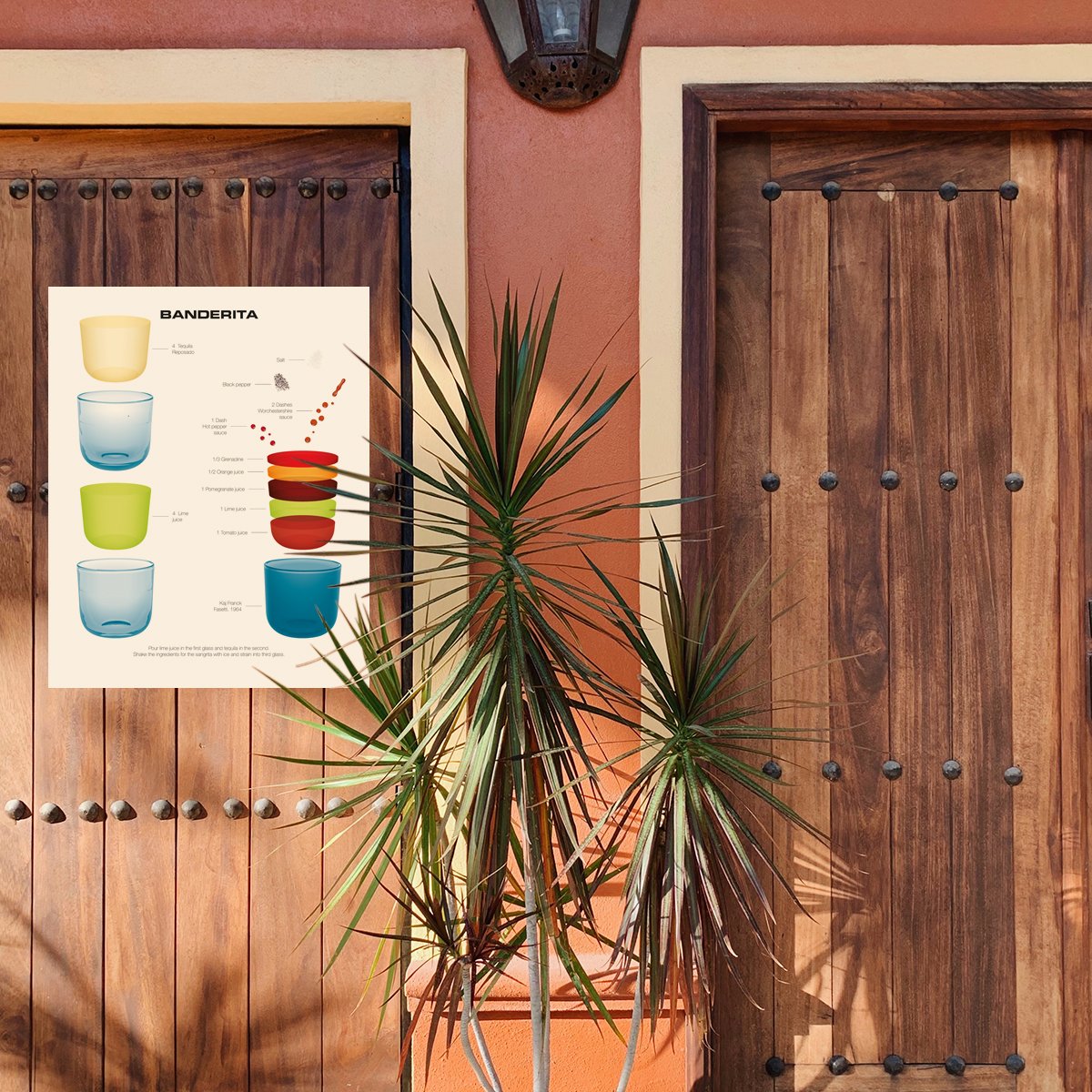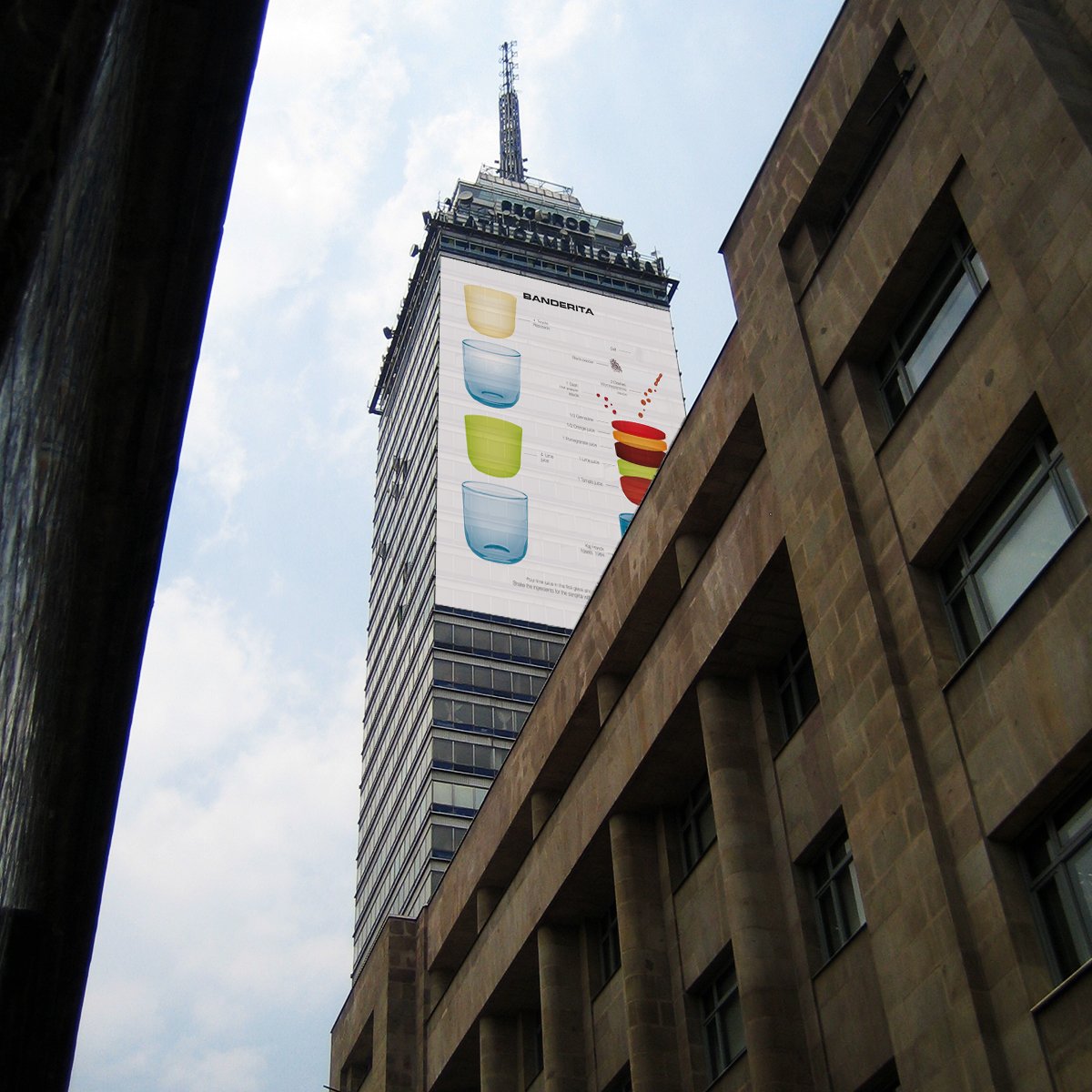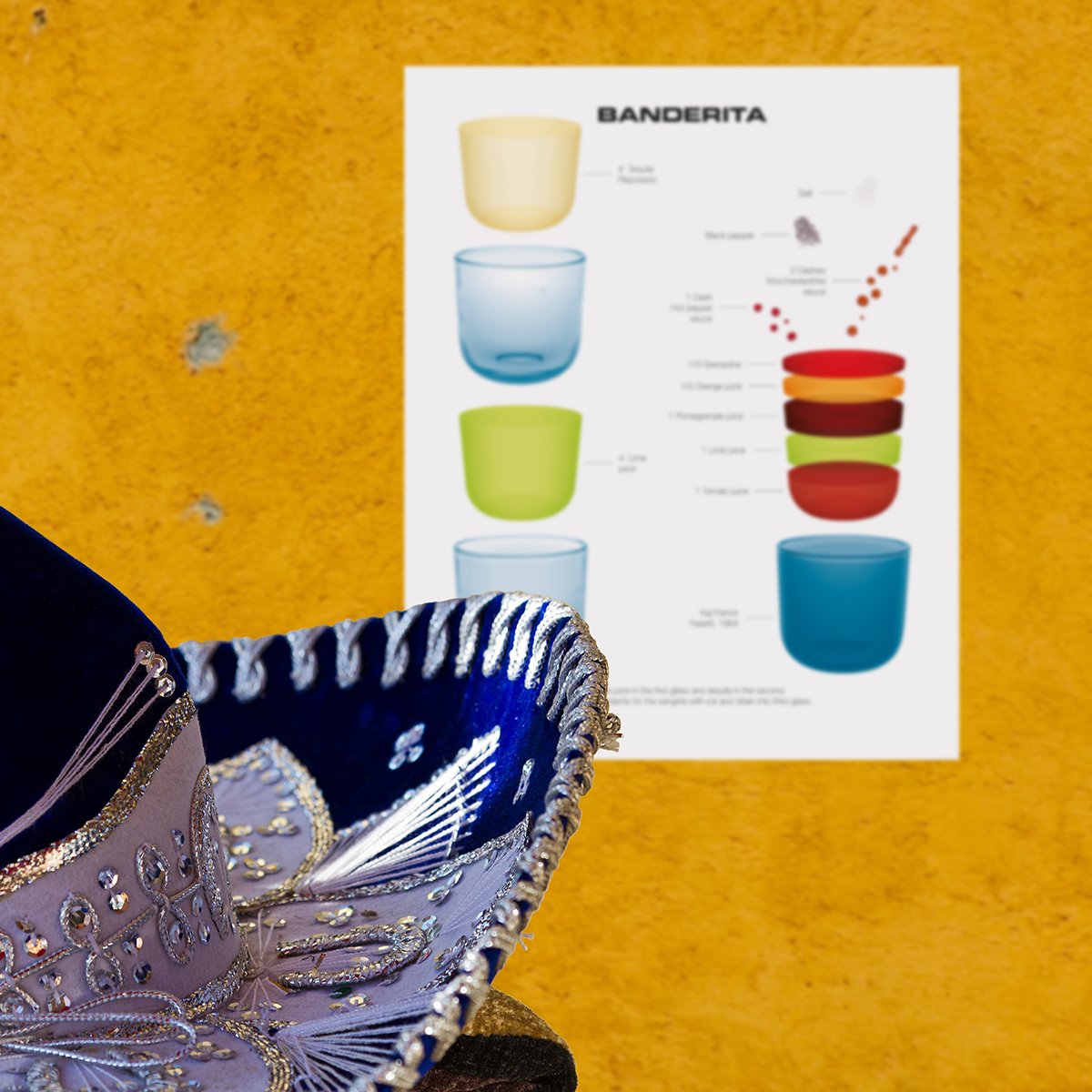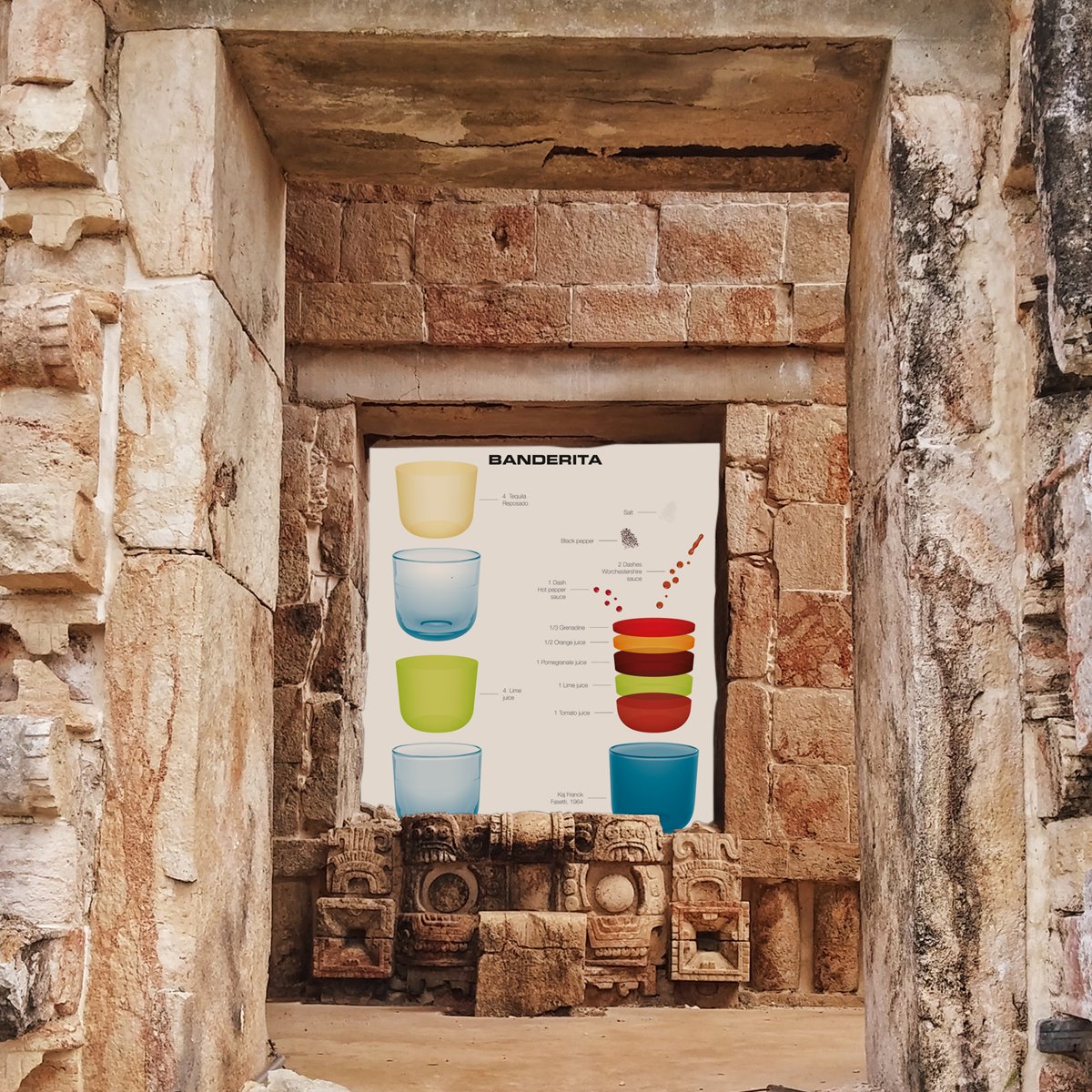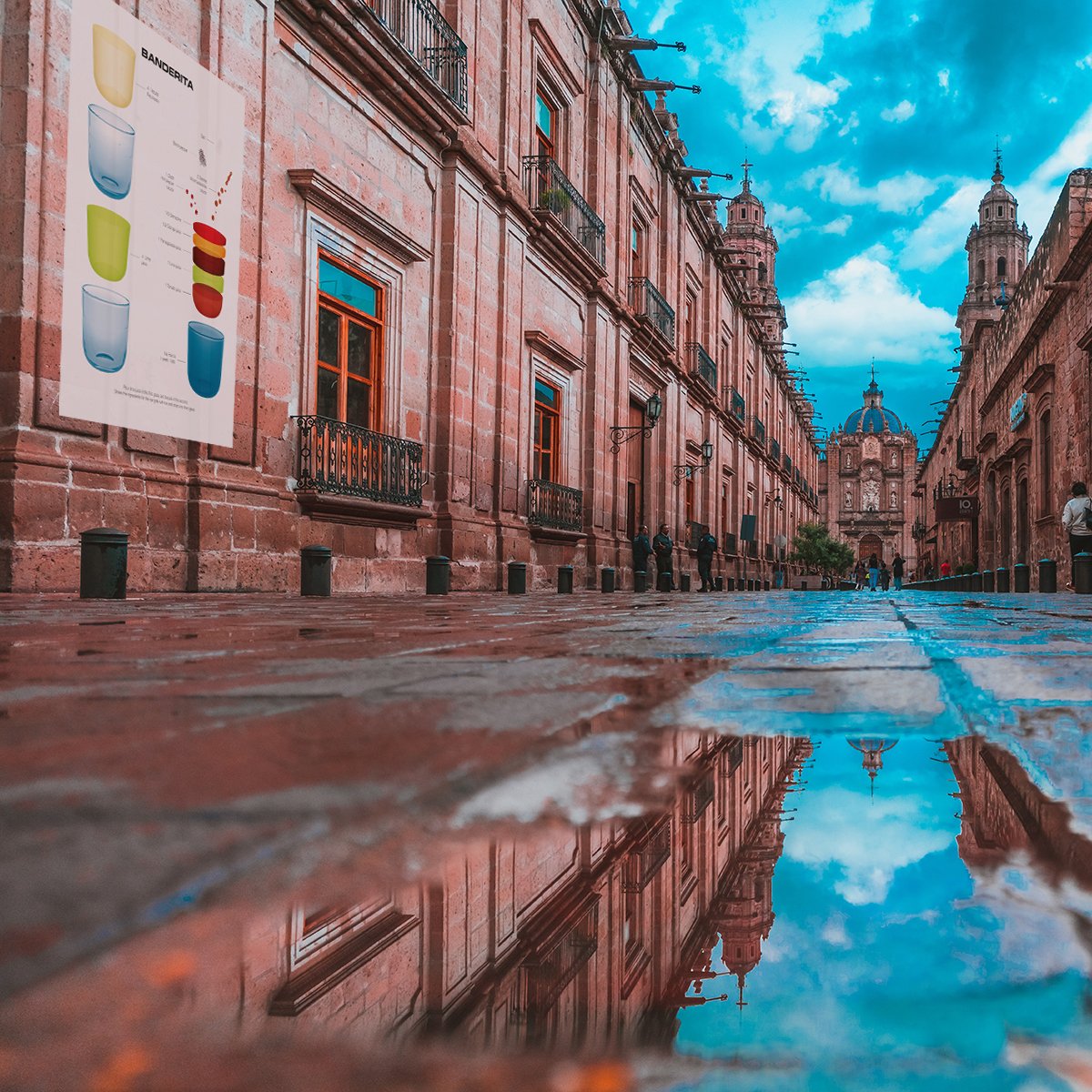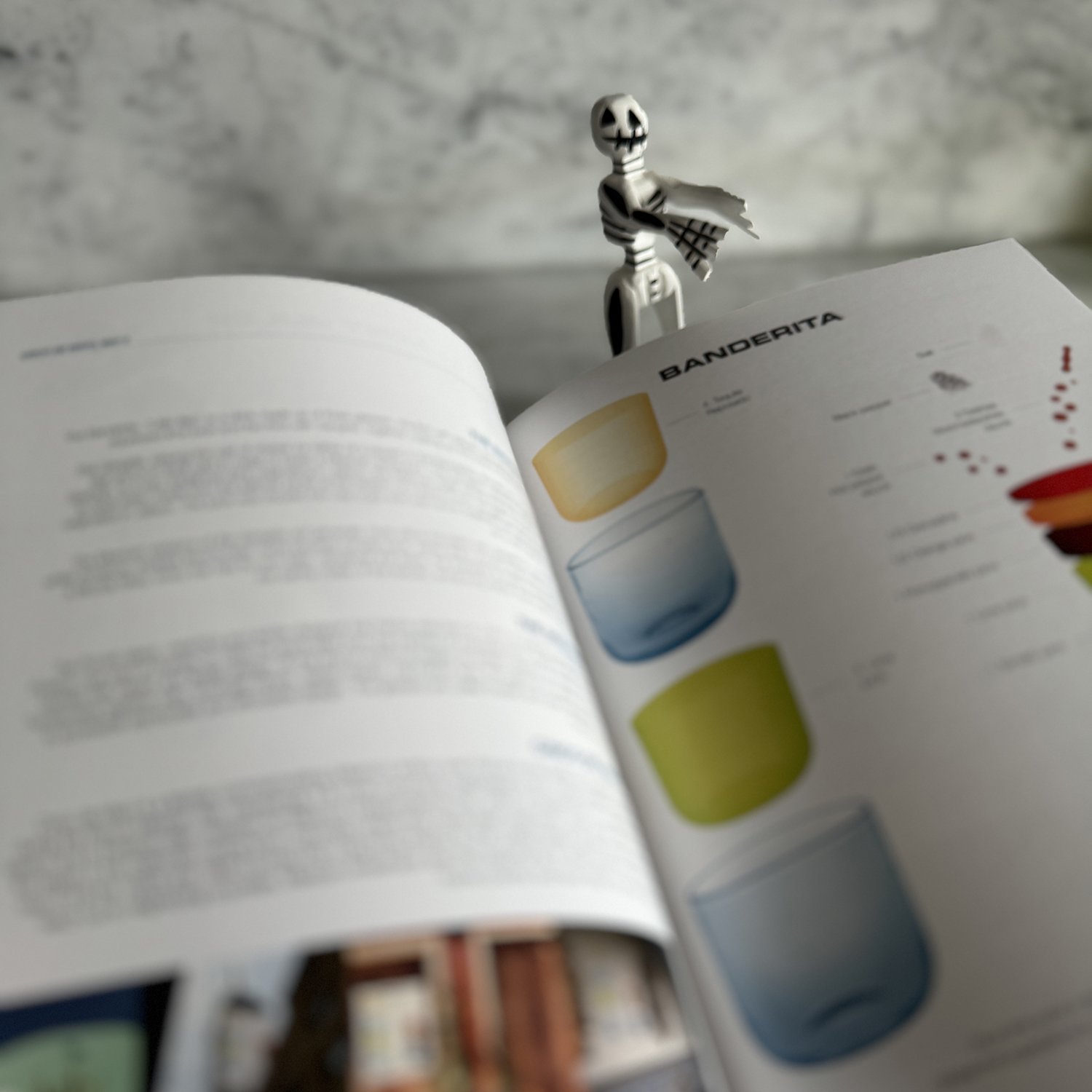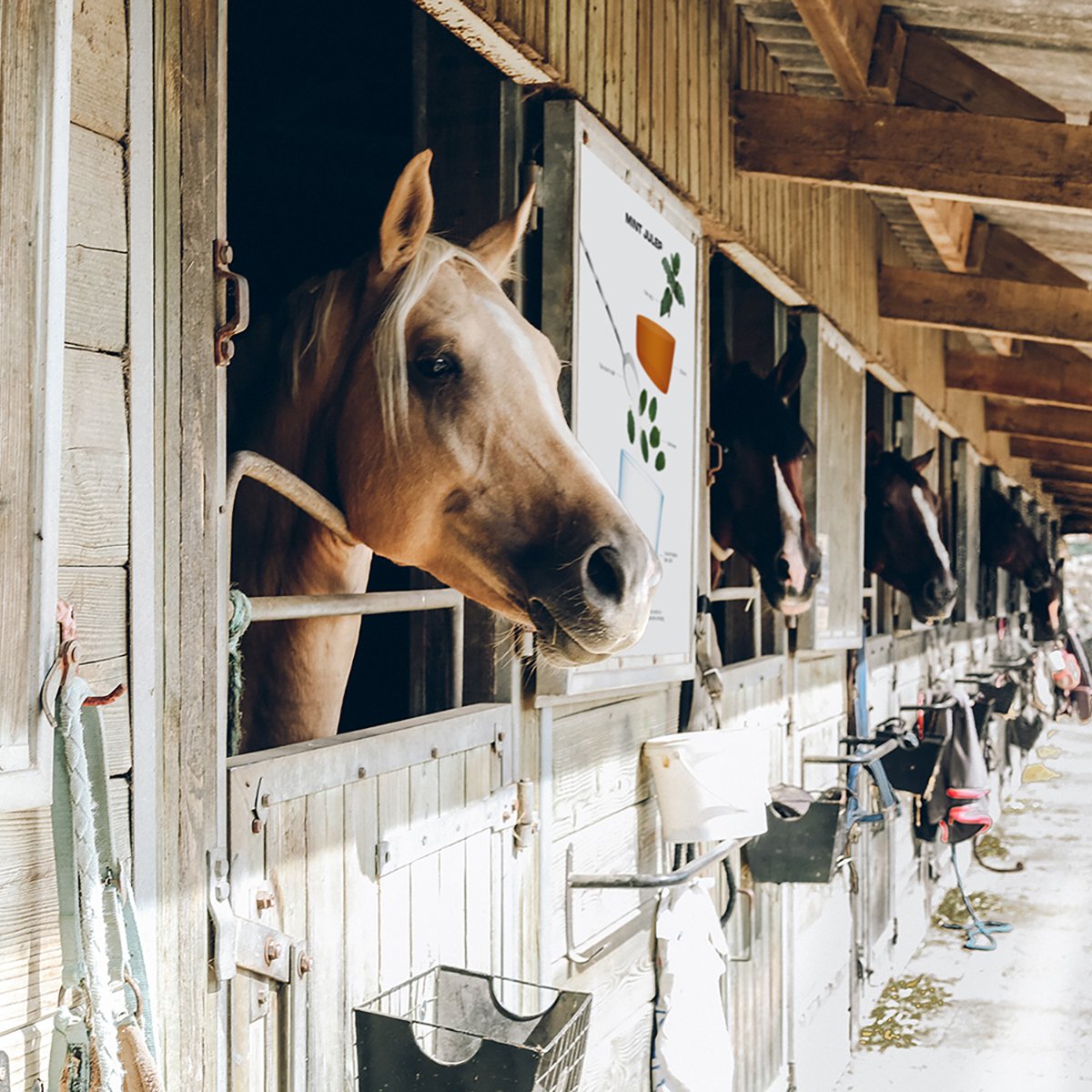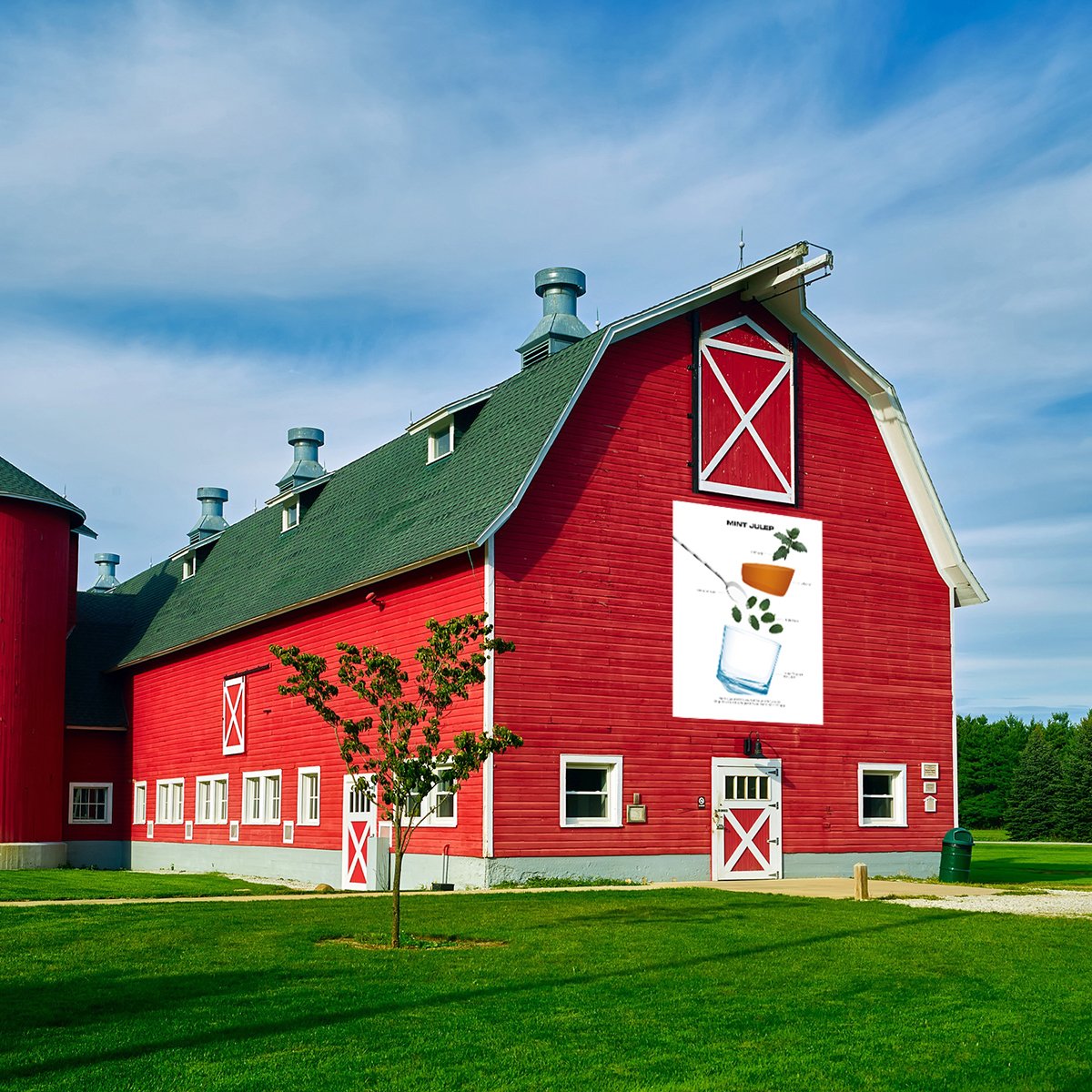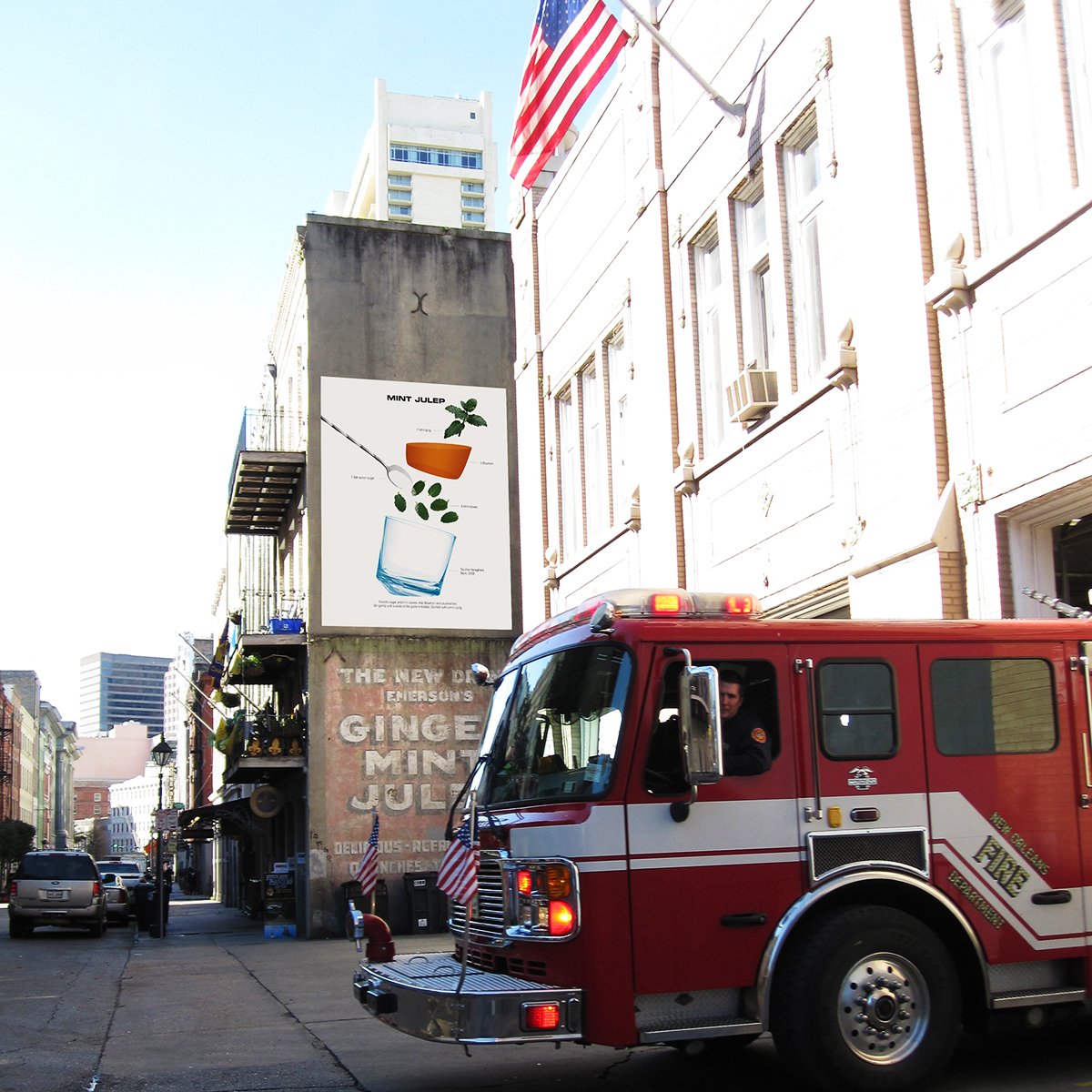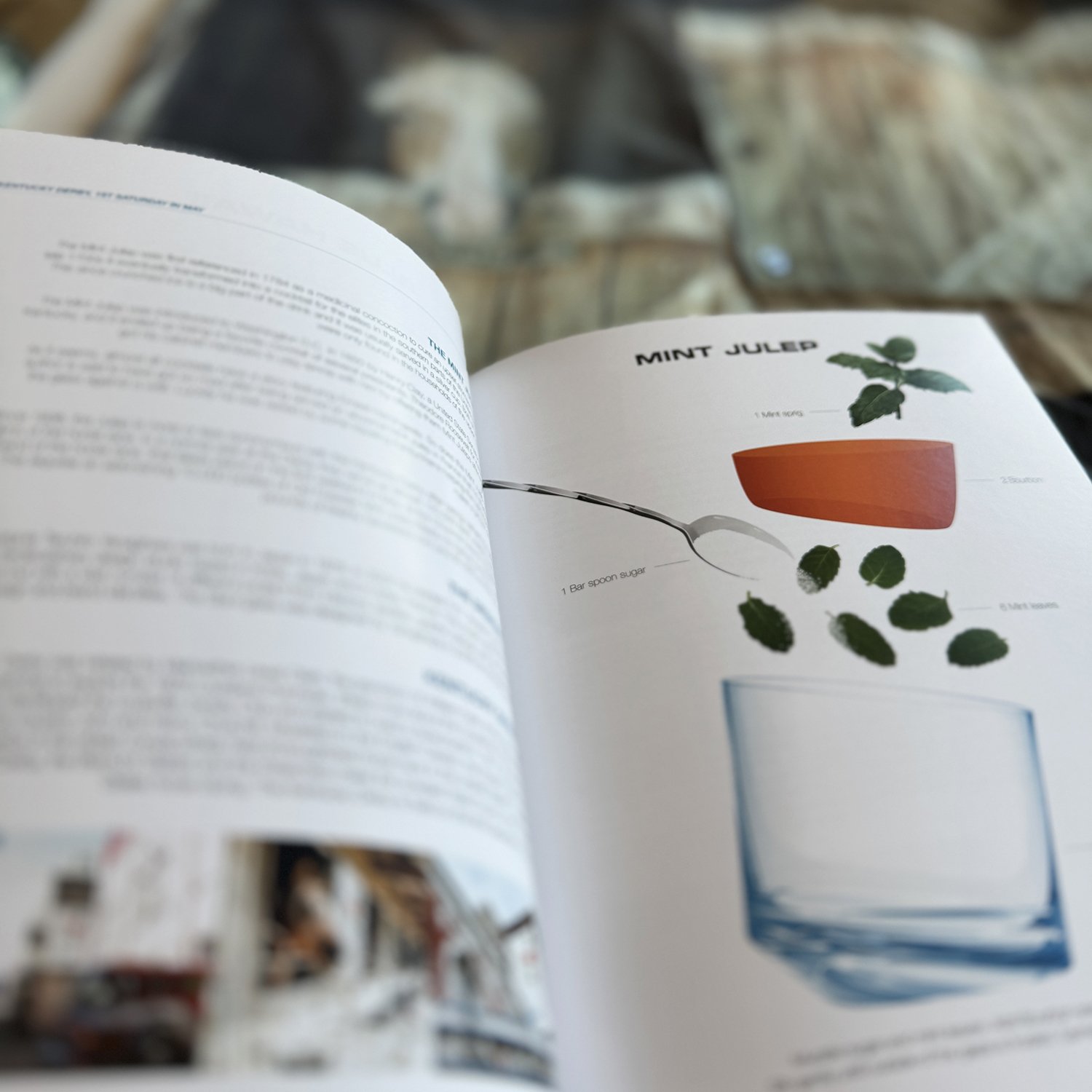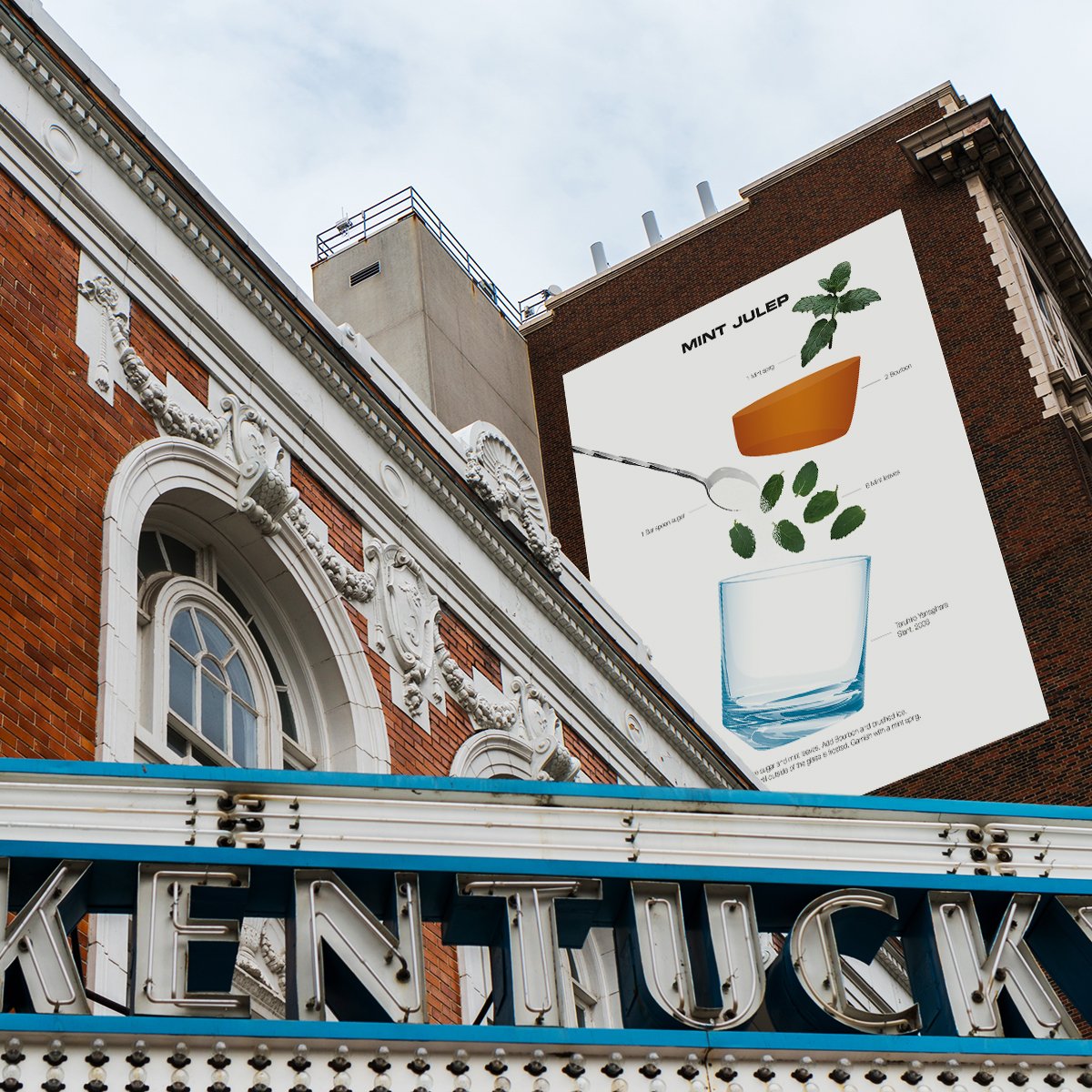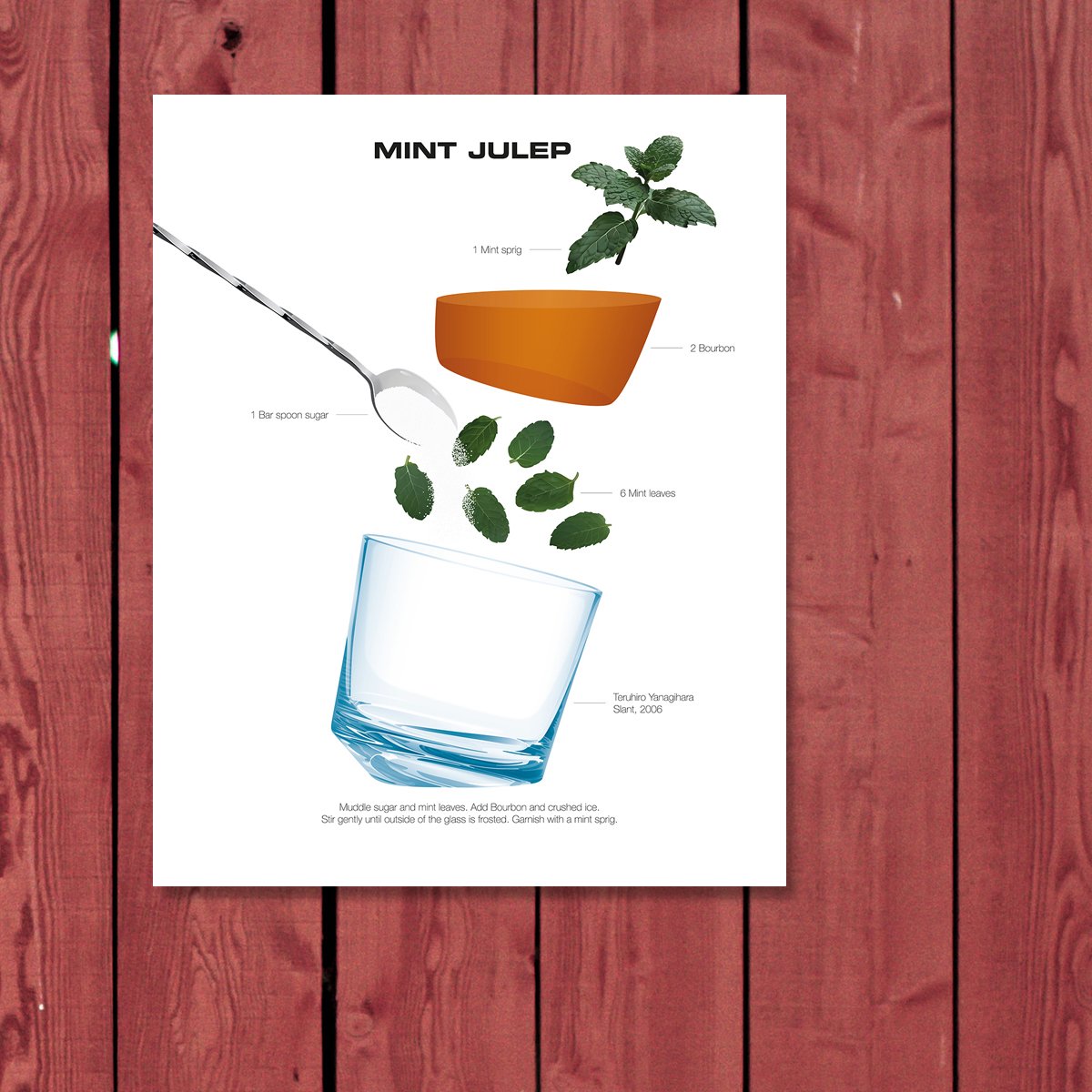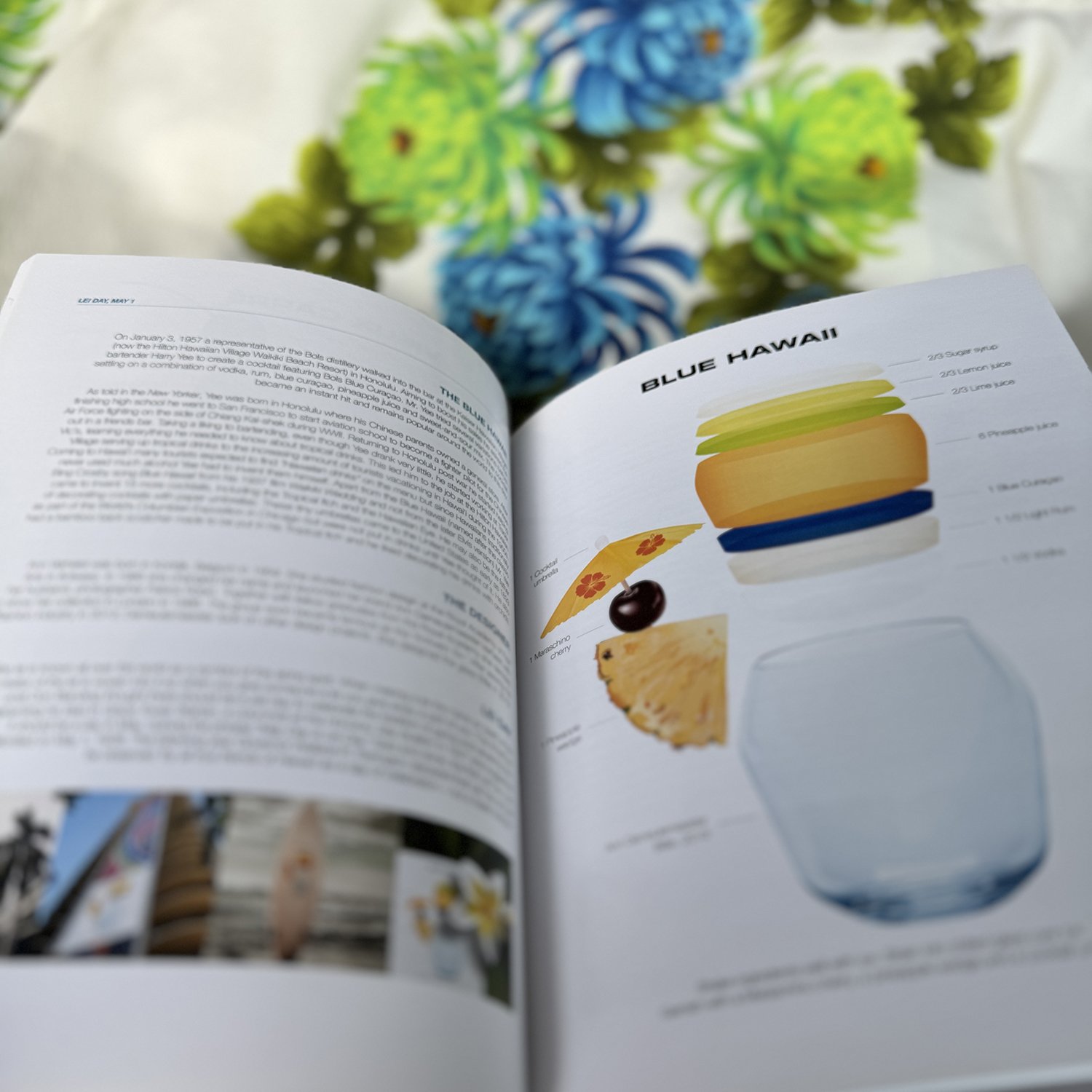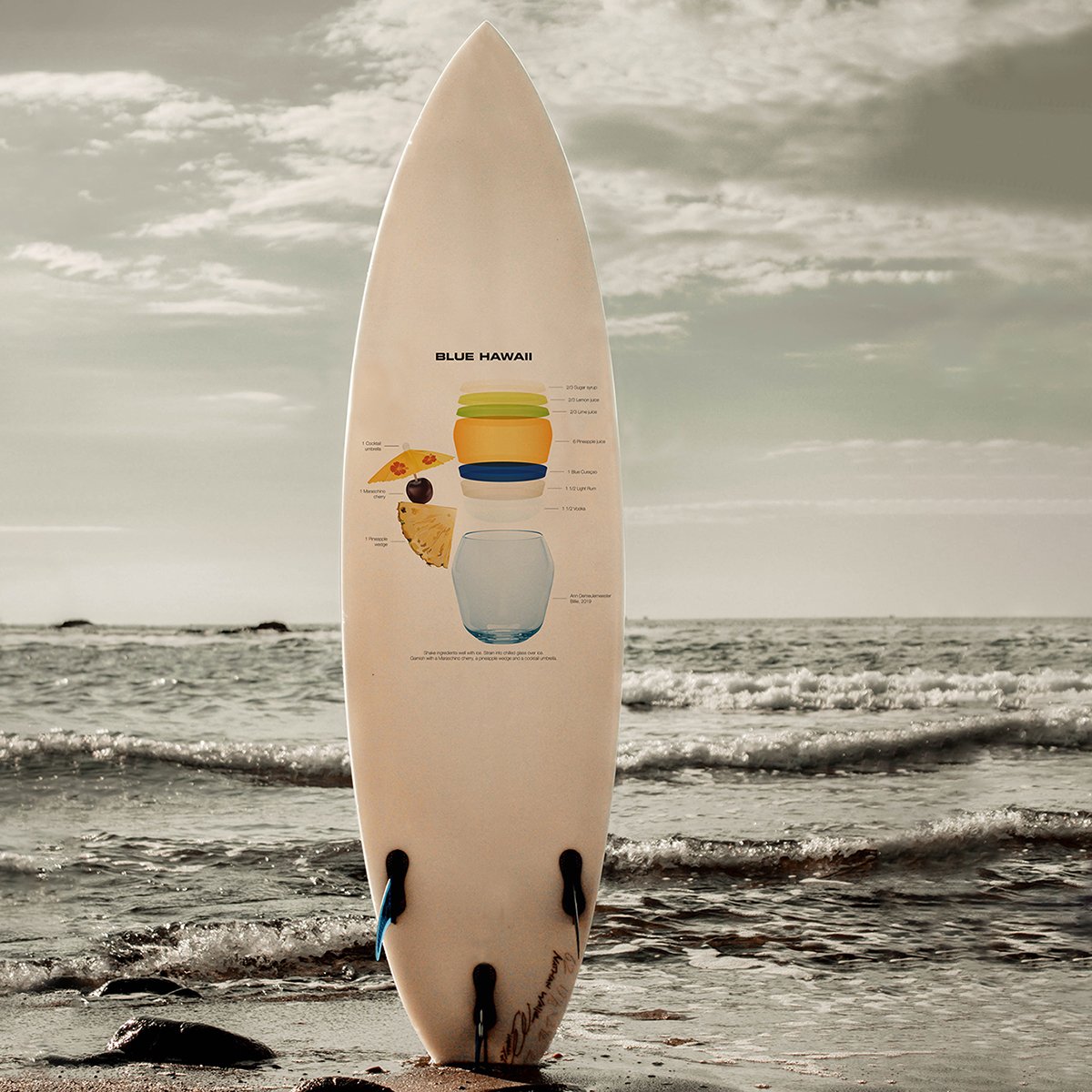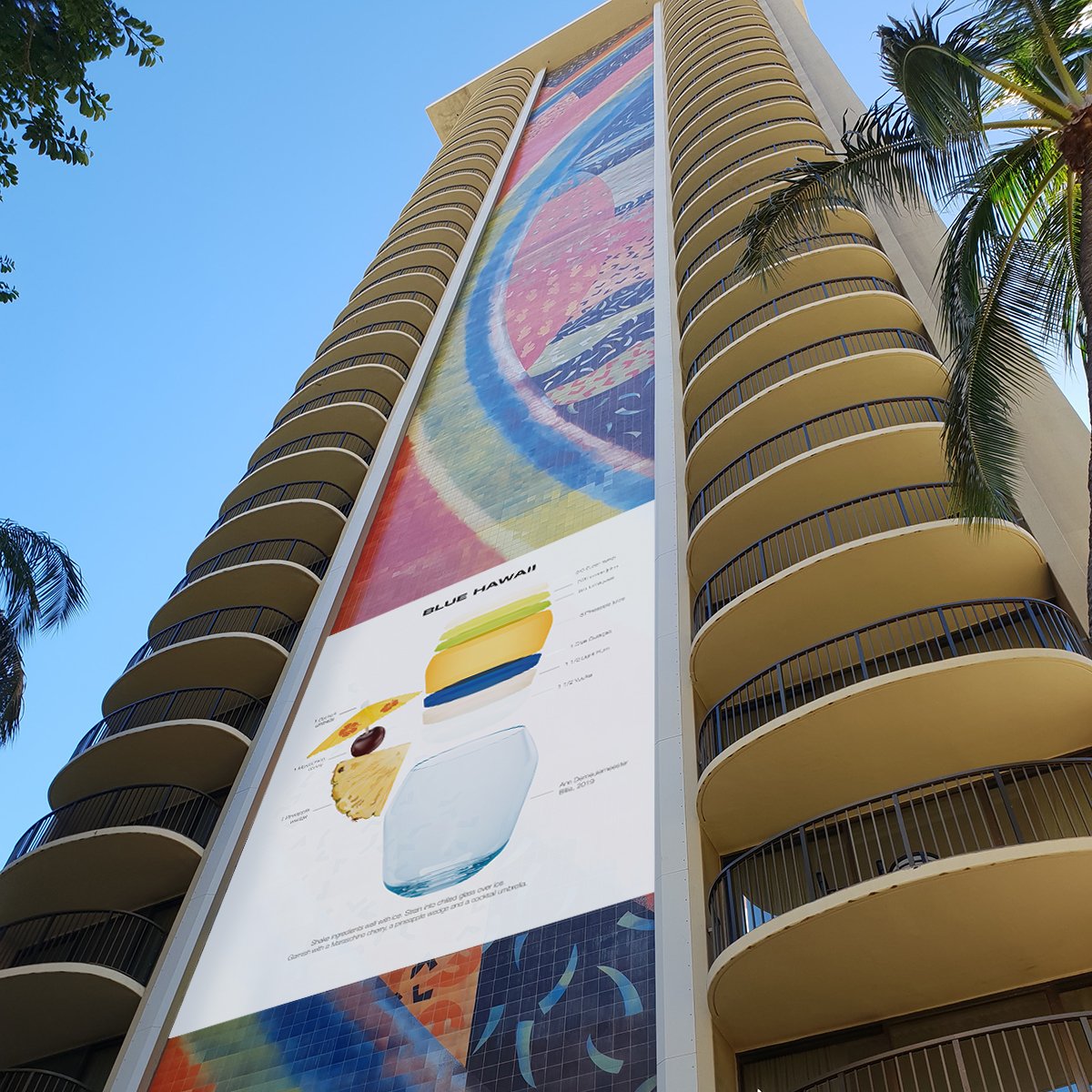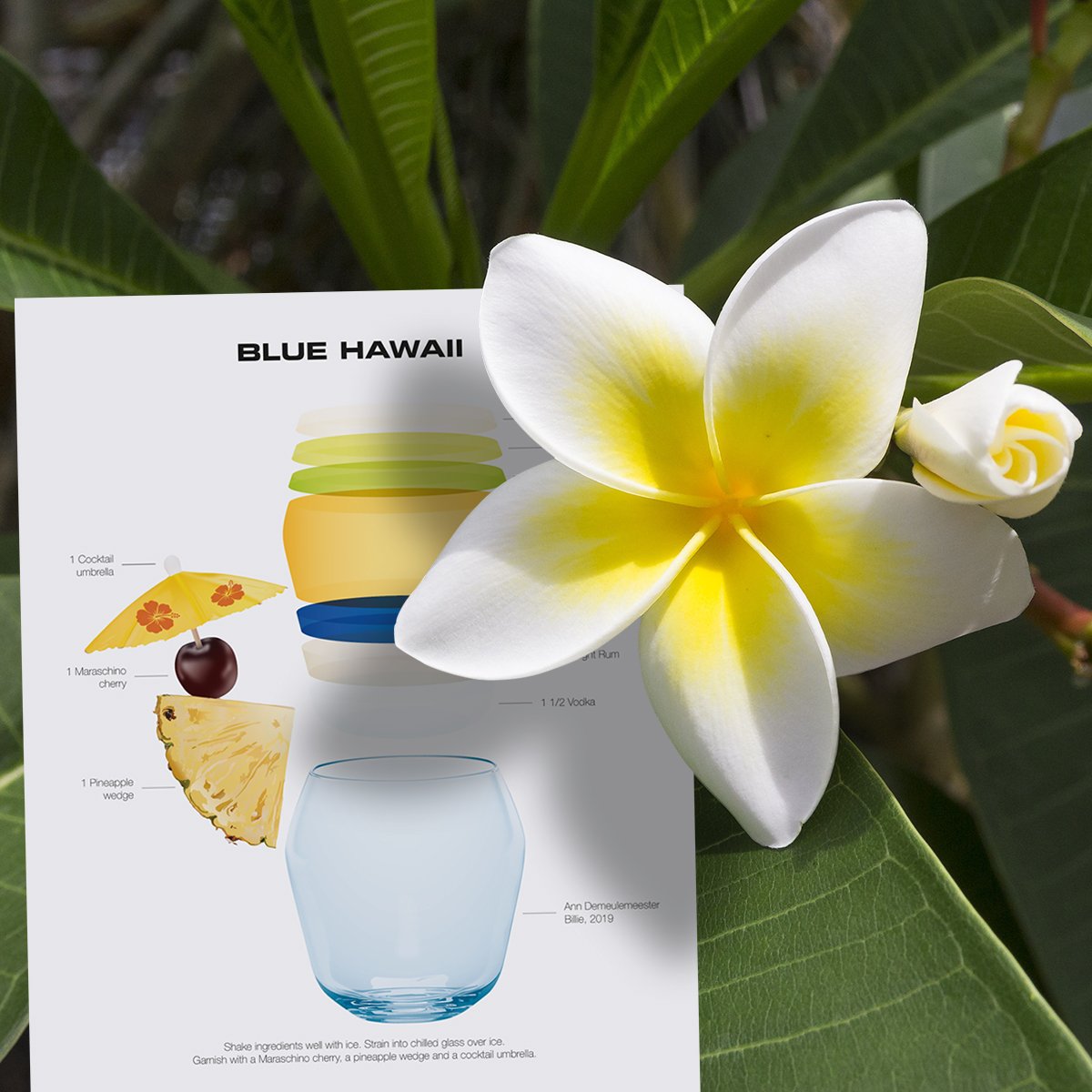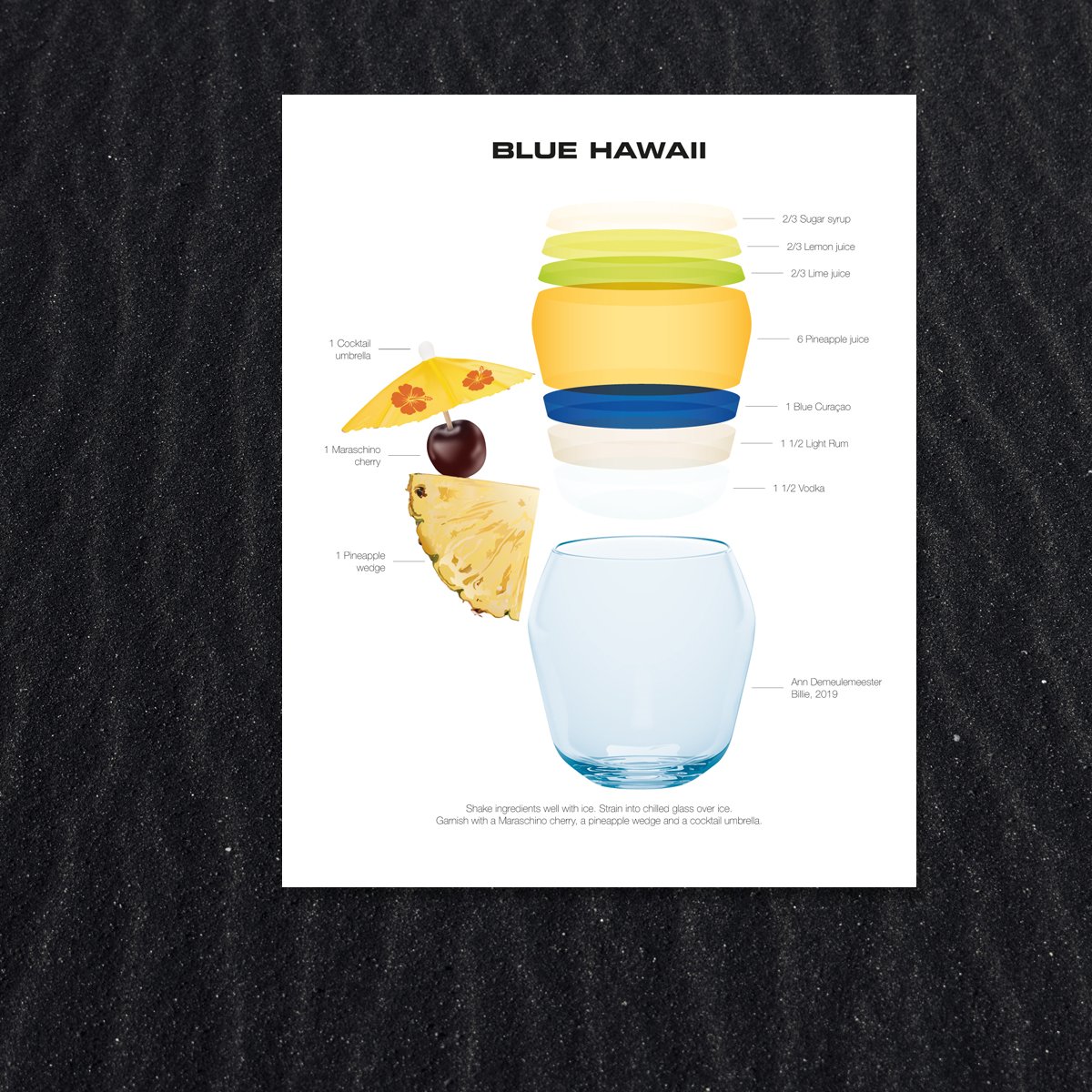HALLOWEEN
Halloween is celebrated every year on October 31. The tradition started as an ancient Celtic festival called Samhain when bonfires were lit and people wore costumes to scare off ghosts. In the eighth century, Pope Gregory III decided that November 1 should be a day to honor all saints. The two celebrations soon merged and the evening before All Saints Day came to be known as All Hallows Eve, later Halloween. In the United States Halloween parties didn’t really take off until the late 19th century when a great amount of Irish immigrants came, fleeing the Irish Potato Famine. So shake up a Bloody Mary, Blood and Sand, Zombie, Death in the Afternoon, El Diablo a Last Word or any other Halloween-like cocktails to celebrate this All Hallows Eve.
THE LAST WORD
The cocktail was invented at the Detroit Athletics Club around 1915, a club originally founded in 1887 but remade in the early 1900s to cater to Car Company executives and other prominent Detroiters. Not only was the club exclusive, the Last Word was the most expensive cocktail at the club selling for 35 cents, twice as much as a Manhattan.
The Last Word might have been made in honor of the New York vaudeville performer Frank Fogarty. He was performing at Detroit’s Temple Theater at the time of the drinks creation, and the name of the cocktail might be an allusion to the monologue with which he closed his act. The recipe for the Last Word didn’t appear in print until Ted Saucier, an authority on food and drink, added it to his 1951 cocktail book Bottoms Up. In the book Saucier, a boulevardier according to New York Times, calls Fogarty “a very fine monologue artist”. After Bottoms Up the drink never really took off, until the early 2000s.
THE DESIGNER
The cocktail glass was designed by Polish-Ukrainian designer Wszewłod Sarnecki in 1964.
The Agent And His Sidekick Cocktail
October 4th is International Vodka Day, a day to celebrate the versatile liquor that accounts for almost 25 percent of all spirits sold in North America. Here’s to the spirit that “Leaves you Breathless”, as the Smirnoff ad campaign from the 1950s touted.
THE VESPER
In 1952 the British former spy and writer, Ian Fleming, wrote his first book in a series of novels about the British agent extraordinaire with a license to kill. The book was Casino Royal and it featured a double agent called Vesper Lynd. Being the first ever Bond woman and thus James Bond’s first love interest she got a cocktail named after her, the Vesper. The cocktail, a version of the Martini, was created by Ian Fleming himself and the instructions Bond gave to a bartender in the book were very clear. “Three measures of Gordon’s, one of vodka, half a measure of Kina Lillet. Shake it very well until it’s ice-cold, then add a large thin slice of lemon peel.” The only problem making it today is that the bitter Kina Lillet was discontinued in 1969 so you have to substitute it either with Cocchi Americano to get the original bitterness or use Lillet Blanc and maybe add some bitters to the drink. Ian Fleming might have gotten the idea for the Vesper from Ted Saucier’s 1951 cocktail book Bottoms Up, a book where the Vodka Martini first appeared in print. Saucier credited Jerome Zerbe, photographer, and Society Editor for Town and Country, with the recipe. On a side note, during the 1930s and onwards Jerome Zerbe worked at the Rainbow Room, the nightclub El Morocco and at the Stork Club as one of the first ever paparazzi.
THE DESIGNER
Lee Broom designed the glass, On the Rock, in 2014.
The World Mai Tai Day
On August 30, 2009, the city of Oakland declared that from then on August 30 should be World Mai Tai Day. It was a day in August 1944 Victor Bergeron made the first Mai Tai.
THE MAI TAI
The history of the Mai Tai is a story of two tiki bar giants. Victor Jules Bergeron (aka Trader Vic) and Ernest Raymond Beaumont Gantt (aka Donn Beach, or Don the Beachcomber). Donn Beach opened his first South Pacific style restaurant in Hollywood in 1933. He was a rum connoisseur and started making exotic rum drinks inspired by his many travels.
Trader Vic had his own restaurant called Hinky Dinks that he opened in 1934 in Oakland, California. After a trip to Cuba to refine his bartender skills and learn more about rum, the Trader remodeled Hinky Dinks into a Polynesian style tiki bar and changed the name to Trader Vic’s.
The Mai Tai was first made in 1944 for Ham and Carrie Guild, a couple of Tahitian friends of Bergeron’s. They liked it so much Carrie Guild exclaimed in Tahitian “Mai Tai-Roa A’e” meaning “Out of this world, the best”. “That was that”, as Mr. Bergeron said.
Trader Vic and Don the Beachcomber fought over the invention of the Mai Tai for many years but when Mr. Beach claimed the drink to be his the Trader had enough. Donn was sued and lost. Trader Vic stated “There has been a lot of conversation over the beginning of the Mai Tai, and I want to get the record straight. I originated the Mai Tai, but many others have claimed credit … Anyone who says I didn’t create the drink is a dirty stinker.” Victor Bergeron might however have got the inspiration for the drink, along with making a tiki bar out of Hinky Dinks, from Donn Beach so without Donn we probably wouldn’t have the Mai Tai.
THE DESIGNER
The glass, called Pitagora after its triangular base, was designed by Marco Zanuso in 1969.
The Whiskey Sour Day Celebrated With A New York Sour
The Whiskey Sour Day on August 25 each year is a perfect time to try this 19th century classic. Make it with bourbon or whiskey or try New York Sour by adding a Claret float.
THE WHISKEY SOUR
The first time the word sour was used in regards to a drink was in 1856 on a bar menu at Mart Ackermann’s Saloon in Toronto, Canada. In print the sour, brandy and gin, appears for the first time in 1862 in The Bartender’s Guide by Jerry Thomas. Eight years later, the Whiskey Sour makes the stage in Waukesha Plain Dealer, a Wisconsin newspaper. In 1883 the drink had already developed and many bartenders started adding a Claret float, to the drink. Apparently the word Claret was used a bit loosely at the time and didn’t necessarily mean a red wine from Bordeaux. This version came by many names but the bartending world finally settled on New York Sour.
The Whiskey Sour is traditionally made with whiskey, lemon juice, sugar and egg white, an ingredient that will smooth the tartness of the lemon juice and give the drink a frothy topping. The egg white was probably added in the early 1900s. Today the egg white is optional and you often find bars serving the Whiskey Sour without it.
THE DESIGNER
The glass, called Dondolino, was designed by Setsu & Shinobu Ito in 2016 and is painted using a technique with Japanese lacquer called Urushi.
The Sneaky International Rum Day
August 16 is International Rum Day and a great way to celebrate is to make a Sneaky Tiki, a Dark ’n Stormy, a Mai Tai or any other rum based cocktail.
THE SNEAKY TIKI
This is a tiki drink that wasn’t created by one of the tiki bar giants, Trader Vic or Don
the Beachcomber. It was first made either at the Wheel Bar at Harvey’s Casino Resort in Lake Tahoe or at Tiki Bob’s in San Francisco.
Harvey’s first opened right after WWII by gambling pioneer Harvey Gross. The casino started small with just six slot machines and eventually grew to a casino empire. In fact, it was the very first casino in Lake Tahoe, right at the border between Nevada and California.
Another possible creator of the Sneaky Tiki was “Sneaky” Bob Bryant. He worked in San Francisco as a bar manager for Trader Vic’s, who taught him the tricks of the trade. After a falling out with Victor Bergeron, “Sneaky” Bob left and in 1955 he started his own tiki bar just down the street. A bar he named Tiki Bob’s.
Decorated with Polynesian and Asian artifacts and having the guests welcomed by a 50s style tiki column right outside the entrance, Mr. Bryant made a bar rivaling his former employer. The bar’s signature drink was called the Super Sneaky Tiki. “Sneaky” Bob had the foresight to introduce the tiki mug to his bar, a new concept at the time. The design for Tiki Bob’s logo and Tiki mug was made by Alec Yuill-Thornton, an illustrator who had previously worked with Bergeron, illustrating his book Kitchen Kibitzer. Being one of the first Tiki mugs ever created it is highly sought after by collectors.
THE DESIGNER
Alec Yuill-Thornton designed the Tiki Bob tiki mug in 1955.
A Sgroppino on Ferragosto
Ferragosto is celebrated on August 15 every year. It is usually one of the hottest days in Italy and most Italians try to leave the cities. The celebration actually dates back to the year 18 BCE when the Roman Emperor Octavianus Augustus decided to establish several days of formal rest for the hard working agricultural workers of the Roman Empire. Even farm animals were released from work and decorated with flowers. The festivities started August 1 with more days spread out over August. During Roman times it was called Feriae Augusti, Latin for The Holiday of Augustus. (Augustus actually gave name to the month). The Catholic Church eventually decided to move Ferragosto to August 15 to coincide with the Assumption of Mary m. However you celebrate Ferragosto, cooling off the August heat with a Sgroppino is a great way to do it.
THE SGROPPINO
The Sgroppino was probably first created in a wealthy home in Venice during the sixteenth century. To be able to make sorbetto for the Sgroppino you need ice and the only households that kept ice during the Renaissance were the aristocrats and the very upper class. Ice was collected form rivers and lakes during winter and stored in ice houses for use in summer.
The drink could either be served as a palate cleanser or at the end of a meal as you would a limoncello today. The name Sgroppino comes for the Italian word sgropare, in Venetian dialect sgropin, the name still used in Venice, meaning to untie a knot, referring to knots in the stomach after a big dinner. The Sgroppino is made by whisking together sorbetto and prosecco to create a froth. Over time vodka, sambuca or limoncello was added making it more complex.
THE DESIGNER
The Narcisso glass was designed by Italian-American designer and sculptor Isabel Antonia Giampietro-Knoll in 1957.
The Bellini and the Prosecco Day
Prosecco Day is celebrated each year on August 13, initiated by Riondo Prosecco to celebrate the sparkling wine from the Italian North-East an hour from Venice.
THE BELLINI
The 15th century Venetian artist Giovanni Bellini, was famous for his vibrant colors and the bartender Giuseppe Cipriani was a big fan. When working at Hotel Europa in Venice in 1927 Cipriani got to know Harry Pickering, a young Bostonian, who was traveling with his wealthy aunt. After a fight his aunt left with her boyfriend and her money leaving Harry penniless with her dog. Giuseppe Cipriani lent Pickering 10,000 lire, an enormous amount of money for a bartender in 1927. Four years later, in February 1931, Pickering returned, not only with the 10,000 he borrowed but adding another 40,000. Enough money for Cipriani to open a bar of his own. His wife Giulietta found the perfect spot. A small old warehouse at the end of a cul-de-sac, just a stones throw from Piazza San Marco. It was exactly what they were looking for, a discreet 45 square meter bar right by the canal, a place customers had to know to go there. As a gesture of gratitude he named it Harry’s Bar.
Cipriani loved white peaches, which are plentiful in Italy from June to September. In 1948 he started making a white peach puree and adding prosecco. His customers loved it and a classic cocktail was born. He named it after his favorite painter due to the pink glow of the drink resembling a pink toga in a Bellini painting.
Over time Harry’s Bar became the favorite hangout for writers, actors and artists like Ernest Hemingway, Huphrey Bogart, Peggy Guggenheim, Charlie Chaplin and Lauren Bacall. In 2001 Harry’s Bar was declared a national landmark.
THE DESIGNER
The Jellies Family Flute was designed by Patricia Urquiola for Kartell in 2014.
The Perfect Cocktail for The World Tequila Day
The origins of tequila dates back to the Aztecs who used fermented sap of the agave plant for religious ceremonies. In the 16th century Spanish conquistadors arrived and introduced the distillation technique and the national spirit of Mexico was born. Tequila is divided into three different categories: Blanco, Reposado and Añejo. The blue agave is only allowed to be grown, and the tequila has to be distilled, in five designated regions in Mexico. Guanajuato, Michoacan, Nayarit, Tamaulipas and Jalisco. On World Tequila Day, July 24 this very Mexican spirit, on the rise all over the world, is celebrated.
EL DIABLO
El Diablo was first mentioned in Bergeron’s “Trader Vic’s Book of Food and Drink” from 1946 and started out as The Mexican El Diablo. It was marked with a TV in his book, to show that it is a Trader Vic original. Bergeron added a little warning to the recipe remarking that “I hate like hell to bring up unpleasant things at a time like this but go easy on this one because it’s tough on your running board”. The drink was taken off the Trader Vic’s menu in the 1950s but reappeared some years later in Bergeron’s next venture. In the early 1960s Bergeron was asked by a friend to open a restaurant in Ghirardelli Square, San Francisco. Wanting to open something Mexican he traveled all over Mexico for inspiration and was surprised he couldn’t find many drinks made with tequila, apart from the occasional Margarita or Tequila Sunrise (the original version created made with tequila, crème de cassis, lime and soda water). When opening his new Mexican restaurant, Señor Pico, in 1964, Bergeron added the drink to the menu and simplified the name of the drink to El Diablo, a name has been used since.
THE DESIGNER
The glass called Ginette was designed by Kenji Matsuura for Sugahara in 2010.
The Apollo 11 Moon Landing and the Moonwalk Cocktail
It took the crew on Apollo 11 only 12 minutes to leave Earth and start orbiting the planet but another three days to reach lunar orbit. With 650 million people watching on television all over the world and with only 30 seconds of fuel remaining the Eagle landed in the Sea of Tranquility. At 10:56 p.m. EDT Neil Armstrong climbed down the ladder and became the first human to ever set foot on the lunar surface proclaiming “That’s one small step for a man, one giant leap for mankind”. During two hours Armstrong and Buzz Aldrin collected samples and took photos before leaving an American flag to returning to Collins waiting in the orbiting command module, Columbia. After another four days they landed in the ocean outside Hawai’i in July 24.
THE MOONWALK
The Apollo 11 moon landing in the Sea of Tranquility was an incredible feat of engineering, effectively making the United States take the lead in the space race.
After returning to earth and a 21 day quarantine (nobody knew what disease or bacteria could be caught during space travel) the crew went on a 45 day, 24 country celebratory Apollo 11 “Giant step Presidential Goodwill World Tour”.
Before traveling across the globe they celebrated with cocktails and the first cocktail they had after returning from space was a Moonwalk. The cocktail was the invention of Joe Gilmore, head bartender at the Savoy’s American Bar in London. Even though the world tour took the astronauts to London Mr. Gilmore never got a chance to serve them his concoction at his bar. Instead he made the crew a batch of the cocktail and sent it to the US along with champagne and glasses.
THE DESIGNER
The glass, called Moonshot, was
made to honor the Apollo 11 expedition. Designed and produced by Libbey in 1969.
The Daiquiri Day
In 1898 an American engineer, Jennings Stockton Cox, led a mining exhibition in the small town of Daiquiri in Cuba. While entertaining guests when he ran out of gin. To keep the party afloat Cox went out and bought rum that was readily available in Cuba. July 19 is Daiquiri Day, a perfect day to raise your glass to Jennings Stockton Cox, to Constantino Ribalaigua or to Ernest Hemingway for that matter.
THE HEMINGWAY DAIQUIRI
”El Rey de los Cocteleros”, or Constantino Ribalaigua Vert, was born in 1888 and learned the trade from his father. At 26 he tended the bar at El Floridita, at 30, in 1918, he had made enough money to buy the bar. During thirty years Constante, as his customers called him, invented more than 200 cocktails, catering to a flow American tourists. The amount of tourists coming to Havana doubled during Prohibition from 45,000 per year in 1916 to 90,000 in 1926.
One of the most famous of El Floridita’s customers was undoubtedly Ernest Hemingway. In the early 1930’s being fairly new to the city, Hemingway was on the way back to his hotel when he ventured into El Floridita in search of a restroom. Some guests were going on about their excellent daiquiris. Hemingway ordered one, then asked for another, this time with less sugar and double the rum. That was the birth of the Papa Doble (Papa after his Cuban nickname and Doble for the double amount of rum). This first version was way too strong to be enjoyed by any other than Hemingway. He boasted having had 17 Papa Dobles in one go in 1942, amounting to about 1.5 liters of rum.
Over time Ribalaigua added grapefruit juice and maraschino to the rum and fresh lime juice. Ribalaigua gave this modified Papa Doble the name Hemingway Daiquiri.
THE DESIGNER
The glass, Model I-103 was designed in 1956 by Timo Sarpaneva.
The World Mojito Day
The Piña Colada Day was declared a holiday by Ricardo A. Cofresí in Puerto Rico in 1978, in honor of the drink, now known as a symbol of Caribbean culture. The best place to experience it is definitely at its birth place at the Caribe Hilton in Puerto Rico.
THE PIÑA COLADA
Piña Colada, means strained pineapple, and is referring to the freshly pressed and strained pineapple juice in the drink. The first time a drink named Piña Colada was mentioned in print was in an issue of Travel Magazine from December 1922. It was made with Bacardi Rum, pineapple juice, lime and sugar but most importantly, it did not include coconut. The name however, fits very well with this pineapple cocktail.
Nowadays, a Piña Colada is generally thought of as a creamy coconut-tasting drink and the original is usually referred to as a Cuban-style Piña Colada. The modern Piña Colada was invented on August 15, 1952 (the Caribe Hilton say 1954), after three months of hard work. Ramón “Monchito” Marrero Perez, the head barman at the Caribe Hilton in Old San Juan, Puerto Rico was trying to create a signature cocktail for the hotels Beachcomber Bar. He eventually landed on the Piña Colada possibly just adding Coco López cream of coconut, a new product in Puerto Rico at the time, to the existing Cuban drink. The change was big enough though to be considered an entirely new drink.
For 35 years Mr. Perez personally served Piña Coladas at the Caribe Hilton, making it so popular it was made the official drink of Puerto Rico in 1978. In 2004 the Caribe Hilton was presented with a official proclamation signed by Sila María Calderon, the Governor of Puerto Rico, in honor of the 50 year anniversary of the famous cocktail.
THE DESIGNER
The glass was designed by Agustina Bottoni in 2020 and is called High Spirits.
The Piña Colada Day
The Piña Colada Day was declared a holiday by Ricardo A. Cofresí in Puerto Rico in 1978, in honor of the drink, now known as a symbol of Caribbean culture. The best place to experience it is definitely at its birth place at the Caribe Hilton in Puerto Rico.
THE PIÑA COLADA
Piña Colada, means strained pineapple, and is referring to the freshly pressed and strained pineapple juice in the drink. The first time a drink named Piña Colada was mentioned in print was in an issue of Travel Magazine from December 1922. It was made with Bacardi Rum, pineapple juice, lime and sugar but most importantly, it did not include coconut. The name however, fits very well with this pineapple cocktail.
Nowadays, a Piña Colada is generally thought of as a creamy coconut-tasting drink and the original is usually referred to as a Cuban-style Piña Colada. The modern Piña Colada was invented on August 15, 1952 (the Caribe Hilton say 1954), after three months of hard work. Ramón “Monchito” Marrero Perez, the head barman at the Caribe Hilton in Old San Juan, Puerto Rico was trying to create a signature cocktail for the hotels Beachcomber Bar. He eventually landed on the Piña Colada possibly just adding Coco López cream of coconut, a new product in Puerto Rico at the time, to the existing Cuban drink. The change was big enough though to be considered an entirely new drink.
For 35 years Mr. Perez personally served Piña Coladas at the Caribe Hilton, making it so popular it was made the official drink of Puerto Rico in 1978. In 2004 the Caribe Hilton was presented with a official proclamation signed by Sila María Calderon, the Governor of Puerto Rico, in honor of the 50 year anniversary of the famous cocktail.
THE DESIGNER
The glass was designed by Agustina Bottoni in 2020 and is called High Spirits.
Great Tennis and a Great Drink
Wimbledon is considered to be the oldest tennis tournament in the world. The first Championships were held at the All England Croquet and Lawn Tennis Club in Wimbledon, 1877. Since 1971, when the first Pimm’s Bar opened at Wimbledon, the Pimm’s Cup has been their signature drink. Each year an incredible 300,000 Pimm’s Cups are served during the 14 days long tennis tournament.
THE PIMM’S CUP
James Pimm was a shellfish monger born in Kent in Southern England. At the age of 30 he was already the owner of five London oyster bars, often frequented by the Royal Family. Sometime between 1823 and 1840 he invented a herbal tonic to help digestion. The “house cup”, as it was called in the oyster bar, was made with gin, quinine, caramelized orange and a carefully selected secret range of herbal botanicals and spices. It was so popular Mr. Pimm bottled it, as Pimm’s No.1 Cup, named after the cup (a small tankard) it was originally served in, and started marketing it as a health tonic. With sales on the rise Pimm branched out and in 1851 he started making a Pimm’s No.2, with Scotch whisky, and No.3 with brandy. By 1859 Pimm started selling his own gin, and six years after that Pimm’s was available all throughout the British Empire. Before his death in 1866 James Pimm had sold his company and the rights to his name to a Fredrick Sawyer who, after 20 years, sold it to the Mayor of London, Lord Horatio Davis.
Alongside the original, No.2 and No.3, through the years there has been a No.4 with rum, No.5 with rye whiskey, No.6 with vodka and lastly No.7 with tequila. Today, only the No.1 and No.6 is left on the market with the No.3 brandy version appearing seasonally as Pimm’s No.3 Winter Cup.
THE DESIGNER
The Tank Highball glass was designed by the British designer Tom Dixon in 2014.
Happy King Kamehameha Day!
King Kamehameha Day was proclaimed a national holiday on December 11, 1871 by King Kamehameha V to celebrate his grandfather, King Kamehameha the Great, the father of the Hawaiian Kingdom. Originally the people of Hawai’i wanted to honor Kamehameha V on his birthday on December 11, but being a humble chief he chose a date as far away from his own birthday as possible, June 11. Every year, a statue made in Italy in 1883, honoring King Kamehameha I in downtown Honolulu is draped with 90 thirty-foot flower leis. King Kamehameha Day is celebrated all over the Hawaiian islands with parades, dances and flower decorations.
THE ROYAL HAWAIIAN
Princess Ka’iulani was born in 1875 to Hawaiian Princess Miriam Likelike and Scottish-born businessman Arthur Cleghorn. At age 11 she lost her mother and at 13 she was sent to England to get a British education. While in England, in 1891, the King passed away and his sister, Lili’oukalani became Queen making Ka’iulani the heir apparent. When Ka’iulani finally came back in 1897 Queen Lili’oukalani had been forced to abdicate and a year later Hawaii was annexed by the US, something Princess Ka’iulani fought hard to stop. Having struggled with poor health during the 1890s the devastated Ka’iulani died in 1899, only 23 years old. Twenty eight years later, a pink palace, the Royal Hawaiian Hotel opened in Honolulu. During the 1920s they created a signature cocktail named Princess Ka’iulani as a tribute to the princess. The cocktail changed name in the 1950s to Royal Hawaiian, but the legacy of Princess Ka’iulani lives on as a symbol of strength, grace, and the rich cultural heritage of Hawai’i.
THE DESIGNER
The glass for the Royal Hawaiian is fittingly called Princess and was designed by Danish architect and designer Bent Severin in 1957.
THE ROYAL HAWAIIAN
3 parts Gin
2 parts Pineapple juice
1 1/2 parts Orgeat
1 part Lemon juice
Shake ingrediens with ice until well chilled. Strain into chilled glass. Garnish with an orchid.
Happy King Kamehameha Day!
A New York Style Swedish National Day
LAUNCH OF SEX AND THE CITY
Based on author Candace Bushnell’s newspaper column and later book anthology the HBO comedy-drama Sex and the City, first aired on June 6, 1998. After 94 episodes and six seasons the last episode was released on February 22, 2004. As June 6 is also the Swedish National Day and that the Cosmo is made with Absolut Vodka it is a great reason to have a Cosmopolitan today.
THE COSMOPOLITAN
Even though the Cosmopolitan isn’t that old, the origin isn’t quite clear. It might have been invented in 1985 by Miami bartender Cheryl Cook at a South Beach bar called the Strand. Wanting to make a perfect cocktail for a Martini glass, Cook used the Kamikaze as a base, used citrus-flavored vodka and added a splash of cranberry juice.
Maybe more likely, it was first invented by bartender Toby Cecchini in 1988 when he was working at Odeon in New York’s Tribeca. Odeon was one of the trendiest bars of the 1980s, frequented by celebrities like Madonna, Robert DeNiro and Andy Warhol. An Odeon waitress had tried a new cocktail in San Francisco made with vodka, Rose’s Lime and grenadine. Liking the idea but hating the taste Cecchini wanted to make something less sweet and artificial. He used Absolut Citron, just released in 1988, added Cointreau, lime juice and a splash of cranberry juice. Soon Madonna, Basquiat, Lou Reed and Andy Warhol were sipping Cosmos and before long NY was flooded with them.
Ten year later, when New Yorkers were sick of them, in steps the characters of Sex and the City. The Cosmo didn’t actually appear until the second season, in 1999, but it soon became as important as the Manolos. The glamorous life of the “Fab Four” was unobtainable for most fans but anyone could afford a Cosmopolitan.
THE DESIGNER
The glass is called Margot and was designed by Ferrone in 2013.
Celebrate Like a Mexican
The tequila brand Cenote initiated World Paloma Day as recently as in 2019 to promote the National Drink of Mexico. Cenote Tequila gets its name from the magnificent underground sweet water cave systems of the Yucatán Peninsula.
THE PALOMA
More popular in Mexico than the Margarita the Paloma, meaning dove in Spanish, might have gotten its name from a popular Mexican folk song from the 1860’s even though it was created almost 100 years after the song. The Paloma isn’t actually that commonly found on bar menus in Mexico. It is rather a drink you have at home, letting your guests mix their own from tequila and mixers. Squirt, the first grapefruit soda and commonly used in Palomas, was created in Phoenix, Arizona in 1938. It was advertised as a great mixer with tequila in 1950 but wasn’t actually exported to Mexico until 1955 so the cocktail probably saw the light of day sometime after that. It might have been the creation of Don Javier Delgado Corona the then owner and bartender at La Capilla in Tequila, Mexico. Correct or not, what is known is that Don Javier created another classic, the Batanga, in 1961. The Batanga is more or less a Rum and Coke with tequila instead of rum and, of course, with a salt rim.
THE DESIGNER
The Finnish designer Saara Hopea was born in Porvoo, Finland in 1925. She was the granddaughter of goldsmith Samuel Mika Westerlund where her father worked as a manager. After studying at the Central School of Industrial Design in Helsinki she worked at a metalsmith company before joining Nuutajärvi glassworks. During her career Hopea worked with jewelry design, enameling, textile design as well as glass design. The Stacking Glass was designed by Saara Hopea in 1951.
Dolly And Tennessee Whiskey
Today we celebrate International Tennessee Whiskey Day.
On May 5, 2021 the Tennessee General Assembly declared May 21 as International Tennessee Whiskey Day to commemorate that Tennessee, (more than three years after Prohibition ended), repealed the ban on manufacturing alcoholic beverages. However, nine out of their 95 counties are still dry, like Moore County where Jack Daniel’s is distilled.
THE LYNCHBURG LEMONADE
In 1980 Tony Mason, a restaurant owner in Huntsville Alabama, created the Lynchburg Lemonade. It was named after the city of Lynchburg, Tennessee, home of Jack Daniel’s Distillery. Two years later a representative of the distillery visited the restaurant, tried the drink and was told how to make it. When Jack Daniel’s started promoting the lemonade as their signature drink a year later, without mentioning the name of its creator, Mr. Mason would have none of it. He sued the distillery and sought compensatory and punitive damages. Unfortunately for Mr. Mason, he lost getting only $1, and Jack Daniel’s still promotes the drink without a word about Tony Mason.
Sometime in the 1850s Jasper “Jack” Newton Daniel left home and started working for Dan Call, preacher, grocer and distiller. Being a busy man Call asked one of his slaves, Nathan “Nearest” Green, to teach Jack everything he knew about distilling whiskey. Mr. Green knew a lot, he was essentially Master Distiller for Reverend Call. When Jack Daniel’s was established in 1866, a year after the abolition of slavery, it was one of the first distilleries registered in the United States. To this very day the original recipe is used when producing Jack Daniel’s and even though they refer to the product as Tennessee Whiskey, the product meets every legal requirement to be called a Bourbon.
THE DESIGNER
The glass is called Puzzle and was designed by Ettore Sottsass in 2003 for Venini.
So put on some Dolly Parton, make yourself a Lynchburg lemonade and join the celebrations.
Feliz Cinco de Mayo
Cinco de Mayo is a festivity commemorating Mexico’s victory over France in the Battle of Puebla in 1862, during the Franco-Mexican War. Interestingly it is more commonly celebrated in the United States than it is in Mexico and is therefore often mistaken for Mexico’s Independence Day, which is September 16. Celebrations first began in the Californian mining town Columbia where they have been held every year since 1863. But it wasn’t until the 1950s it turned into a big thing thanks to the United States government’s effort to reach out to neighboring countries. Mexican-Americans saw the opportunity to take pride in their former home country and took May 5 to their hearts.
THE BANDERITA
The Banderita, “Little flag”, is a drink made up of three glasses, the first with tequila, the second with freshly squeezed lime juice and the third with Sangrita, together making up the colors of the Mexican flag. The Sangrita, playing the role of chaser (or rather of a sipper) in the Banderita, should be considered the star and is in itself said to make or break a Mexican restaurant. The Sangrita, meaning “Little blood” in Spanish, is a very traditional drink originating in Jalisco, the Mexican state where tequila is made. It is said to have been made from the leftover juices at the bottom of a bowl of pico de gallo. The juice was poured into clay cups and was drunk together with tequila after dinner as a well needed digestif. The Mexican versions of the Sangrita are generally more citrus focused with grapefruit, orange and lime whilst American recipes tend to lean more towards tomato juice, rather like a citrusy Virgin Mary. Whatever the base, the Sangrita is there to perfectly balance the earthy notes of the tequila, enhancing its flavor.
THE DESIGNER
The glasses are called Fasetti and were designed by Kaj Franck in 1964.
The Kentucky Derby
The Kentucky Derby was initiated by Meriwether Lewis Clark, the grandson of William Clark of the Lewis and Clark expedition aiming to explore the 1803 Louisiana purchase. Clark developed the Louisville Jockey Club and started to build a racecourse in 1874 on land that he leased from his cousins John and Henry Churchill. Modeled on the English Classic, the Epsom Derby, the annual Kentucky Derby is the oldest consecutively held thoroughbred horse race in the United States. Together with the Kentucky Derby, the Belmont Stakes and the Preakness make the coveted Triple Crown of the United State horse racing. The Kentucky Derby is held on the first Saturday in May. This year the Kentucky Derby celebrates its 150 year anniversary.
THE MINT JULEP
The Mint Julep was first referenced in 1784 as a medicinal concoction to cure an upset stomach. In the late 1700s it eventually transformed into a cocktail for the elites in the southern parts of the United States. This since crunched ice is a big part of the drink and it was usually served in a silver cup. Both of which were only found in the households of the upper class. The Mint Julep was introduced to Washington D.C. in 1850 by Henry Clay, a United State Senator from Kentucky, and it ended up being a favorite cocktail of several presidents. Theodore Roosevelt for instance got his cabinet members to play tennis with him by offering them Mint Juleps afterwords.
In 1938, the Julep was named the official drink of the Kentucky Derby. In a normal year at the Derby they serve up almost 120,000 Mint Juleps over the weekend. This requires an astonishing 10,000 bottles of Old Forester Mint Julep Ready-to-Serve Cocktail, 1,000 pounds of freshly harvested mint and 60,000 pounds of ice.
THE DESIGNER
The Slant glass was designed by Teruhiro Yanagihara in 2006 for Kimura Glass.
Happy Lei Day
The lei is known all over the world as a symbol of the aloha spirit. When making a lei the mana (or spirit) of the creator of the lei is woven into it so when you give someone a lei you give away a part of you. The American poet Don Blanding thought there should be a set day to celebrate the tradition of giving and receiving a lei. Presenting his idea to Grace Tower Warren, a columnist at the Honolulu Star Bulletin in 1927 she suggested it should be a day in May, coining the phrase “May Day is Lei Day”. Said and done, the first Lei Day was celebrated on May 1, 1928. The following year Governor Wallace R. Farrington declared that Lei Day should be observed “by all true friends of Hawai’i as a day of celebration – not a State holiday”.
The Blue Hawaii
On January 3, 1957 a representative of the Bols distillery walked into the bar at the Hilton Hawaiian Village Waikiki Beach Resort) in Honolulu asking the bartender Harry Yee to create a cocktail featuring Bols Blue Curaçao. Mr. Yee tried several variations before settling on a combination of vodka, rum, blue curaçao, pineapple juice and sweet-and-sour mix. The cocktail became an instant hit and remains popular around the world to this day.
Yee was born in Honolulu where his Chinese parents owned a general store. After WWII, during which Yee was a fighter pilot for the Chinese Air Force fighting on the side of Chiang Kai-shek, he got a job at Trader Vic’s, learning everything about tropical drinks. This led him to the job at the Hilton Hawaiian Village serving up tropical drinks to American tourists vacationing in Hawai’i during the 1950s. Most tourists expected to find “Hawaiian drinks” on the menu but since Hawaiians traditionally never used much alcohol Yee had to invent them himself. Apart from the Blue Hawaii Mr. Yee came to invent 15 more cocktails, including the Tropical Itch.







































































































